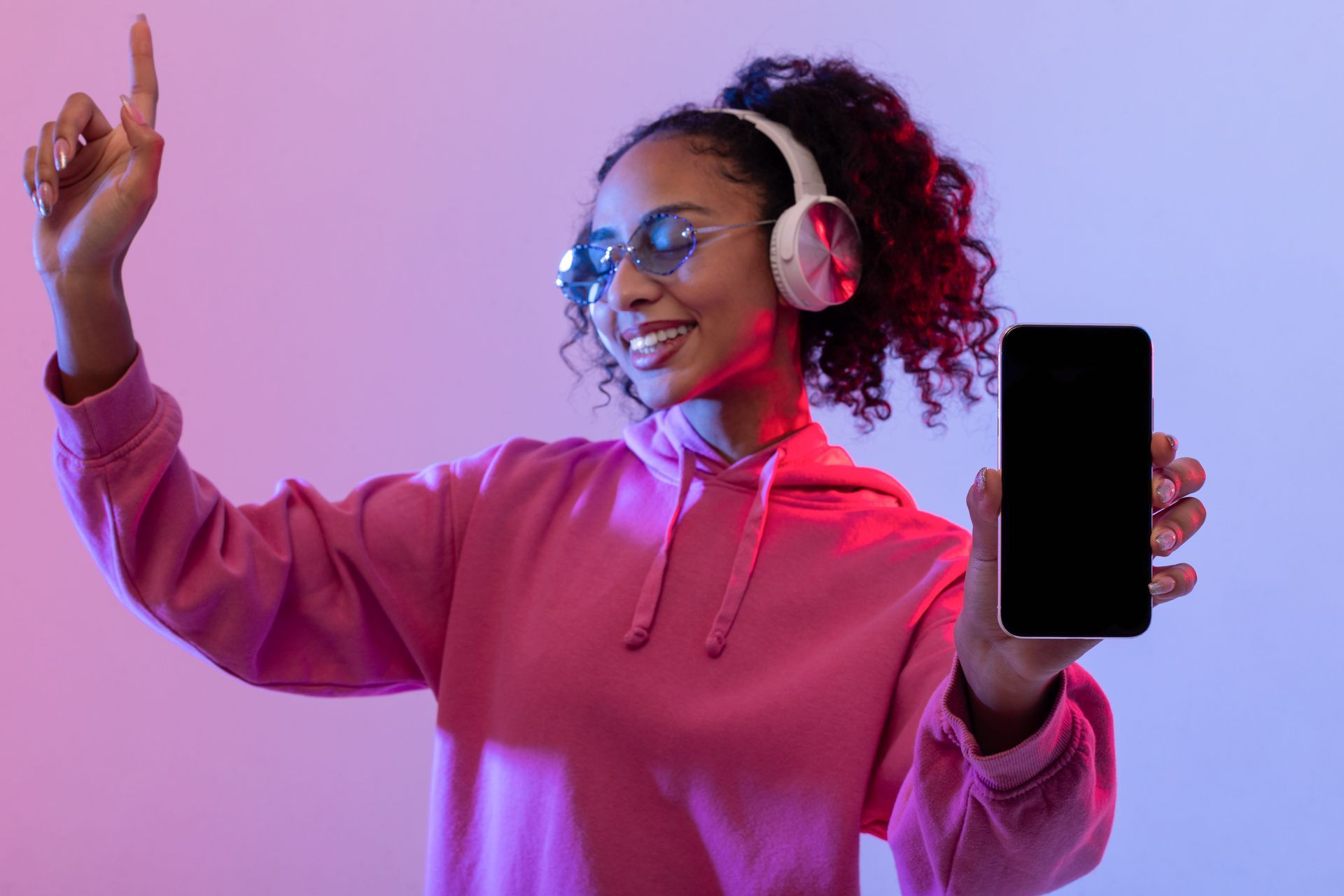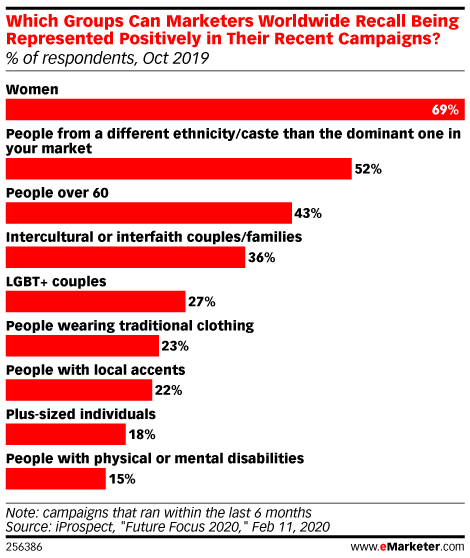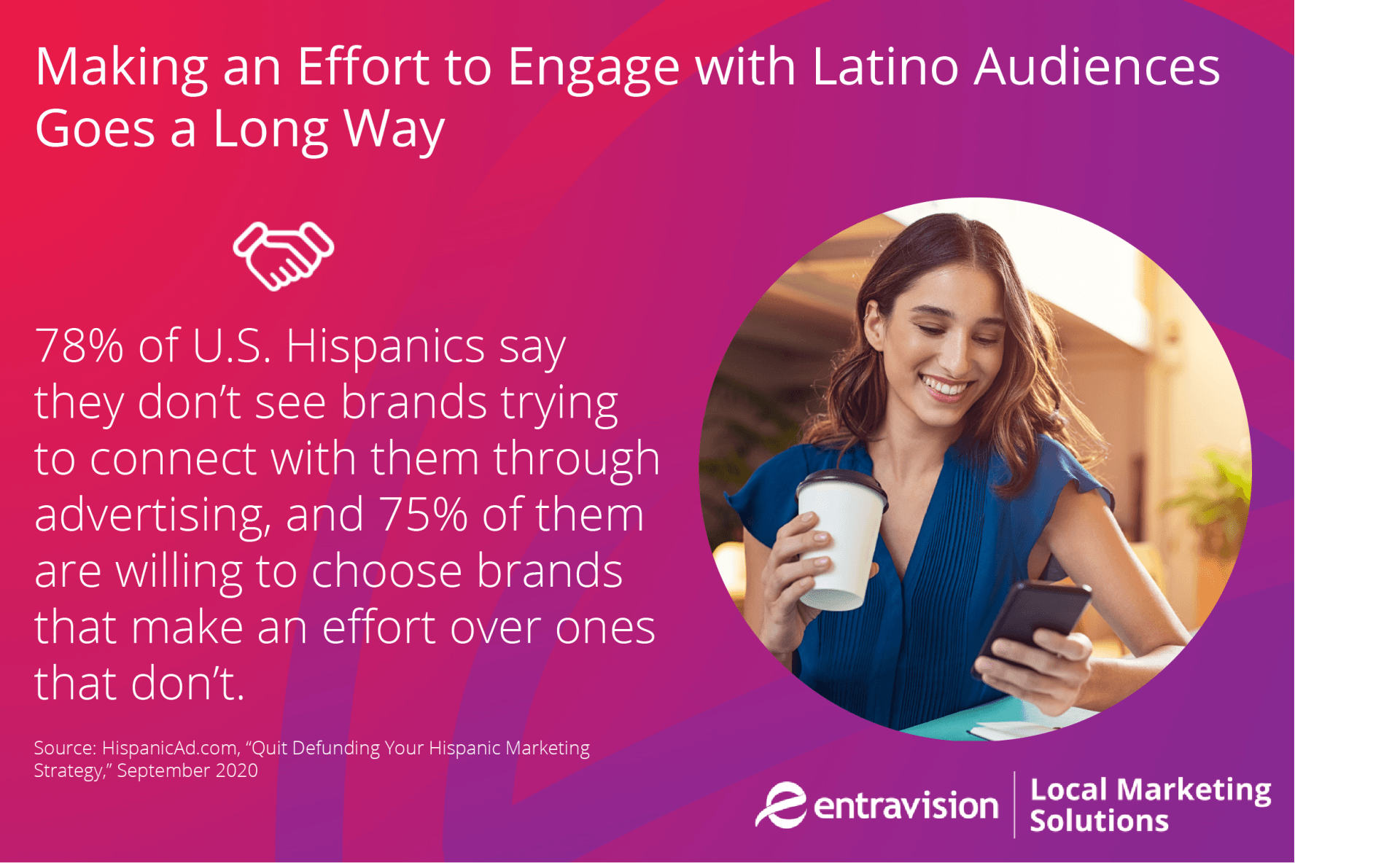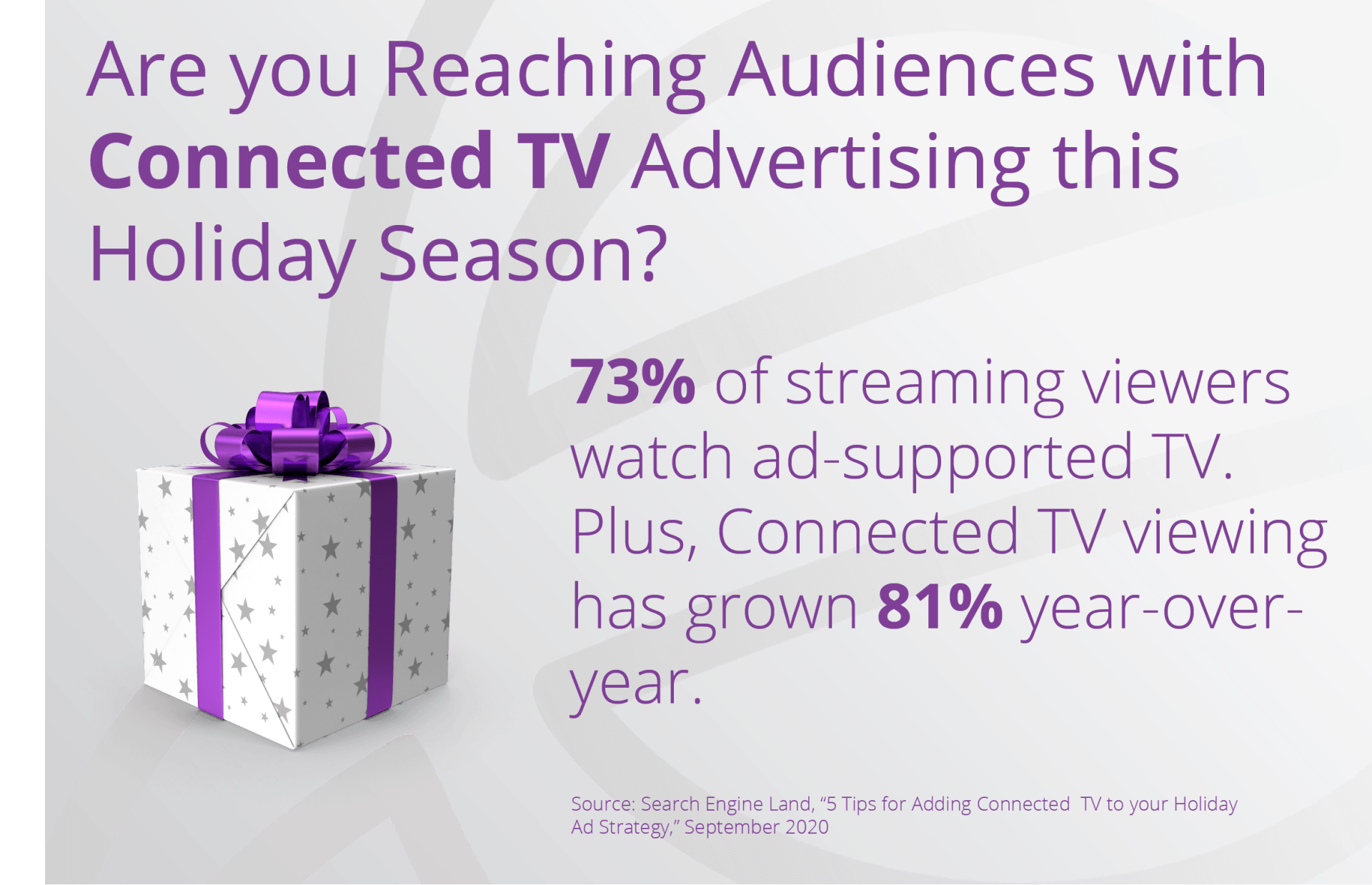A Year in Review: How 2020 Reshaped Digital Marketing (and Our Top Marketing Tips for 2021)
2020… what a year. Not only was it quite a year generally speaking, but it also significantly reshaped the world of digital marketing and accelerated digital transformation that has long been on the way. From a global pandemic, new U.S. president, social movements, and more, find out how the chaos of 2020 changed digital advertising, and how you can best prepare for 2021.
Here’s a sneak peak:
- Social Movements Across the Country and Globe Brought Multicultural Marketing to the Forefront
- Hispanic Marketing has Grown Alongside a Growing Hispanic Population
- The Covid-19 Pandemic Changed Everything for the Long Haul - Including Marketing and Consumer Behavior
- Connected TV Had its Best Year Ever
- Online Shopping Skyrocketed
- Presidential Elections and a Potential New Vaccine Offer Glimpses of What May Lie Ahead
- How a New Presidency Might Affect Marketing in 2021 and Beyond
- How a Potential Vaccine Could Affect Marketing Moving Forward
- How to Get Started with Digital Marketing
Questions or comments?
Contact us
for more info.
Social Movements Across the Country and Globe Brought Multicultural Marketing to the Forefront
Previously, the idea of multicultural marketing and inclusive marketing wasn’t a priority within most digital marketing strategies, with many brands and businesses putting it on the backburner. Not anymore -- after a chaotic year that sparked social movements and conversations all over the country, consumers began to ask themselves what brands were doing to represent and support them.
Much of the recognition brought to inclusive marketing and multicultural marketing has stemmed from the budding activism among Gen Z and Millennial age groups across the country, in part due to their groups also being the most diverse of any other age demographics (Learn more about how age demographics can affect your marketing strategy
by checking out our article). If 2020 has shown us anything about consumer behavior, it’s that consumers are placing an emphasis on the idea of voting with their dollar. It’s not enough to just have a great product or service -- your business can benefit greatly from sharing values of inclusivity and community.
It’s no longer a secret that multicultural consumers are projected to become the
majority
in the U.S. within the next twenty years, and many brands learned this the hard way by losing out on potential business as a result of not connecting with influential multicultural audiences. Inclusive marketing solidified itself as a win-win situation. Not only can members of the public see themselves positively portrayed and play a role in the conversation, but brands and businesses can also reach wider audiences and forge powerful relationships with potential customers.
Emarketer
suggests that marketers, brands, and businesses can benefit from devoting time to reaching historically underrepresented groups including women, racial and ethnic minorities, multicultural groups, LGBTQ individuals, as well as people with disabilities. Why? Well, these groups hold a significant amount of buying power -- and they're also more likely to support brands that can understand their needs and connect with them in an authentic way. What does “authentic” really mean? Read our
post
about the importance of multicultural marketing for an in-depth perspective.
Hispanic Marketing has Grown Alongside a Growing Hispanic Population
One of the largest demographics within the multicultural framework is U.S. Hispanics, who make up roughly half of the population growth taking place in the country. While immigration from Latin American countries has been slowing, the majority of births are taking place within the U.S., driving a sizable 1.2 trillion dollar Latino consumer market.
Brands have taken notice, and they’ve also made their fair share of faux paus when they haven’t taken acculturation factors into account. Repeat after me: Latinos are not a monolithic group! While some cultural values and traditions overlap among Latinos, each country of origin is different and every Latino’s preferences and experiences vary depending on circumstances such as where they were born, which generation they were born into, what their age is, etc. For more on acculturation, see our model
here or read our
post about how to market to Latinos of all backgrounds.
Want to know the best way to market to Latinos in a way that actually resonates? Simply put: This is not the time to DIY. Given the many intricacies of multicultural marketing, choosing a local agency that knows everything there is to know about Hispanic marketing and Latino culture is the way to go. Not sure how to get started?
Contact us for more information or learn
how to pick the perfect Hispanic marketing agency in your area.
The Covid-19 Pandemic Changed Everything for the Long Haul - Including Marketing and Consumer Behavior
At this point, you’re probably sick of seeing the word “Covid-19,” and “pandemic.” You’re probably also sick of seeing the words “unprecedented,” and “new normal,” too -- but that’s besides the point. We’ll cut to the chase since we all know far too well how this year has changed practically everything we thought we knew.
Connected TV Had its Best Year Ever
We’ve all spent questionable amounts of time plugged into our digital devices, from scrolling through our social media feeds for hours to binge watching the latest series that everyone’s been talking about. As a result, digital marketing trends that were already projected to grow this year in 2020 have grown even bigger than marketers could have ever imagined. Remember all the binge watching? That brings us to our next point: Connected TV -- it’s here to stay.
Check out these impressive CTV statistics from
eMarketer
below:
- In 2020, U.S. connected TV ad spending will total $8.11 billion and will increase to $11.36 billion in 2021.
- By 2024, U.S. CTV ad spending will reach $18.29 billion, more than double the amount spent this year.
- Younger audiences are more likely to be CTV viewers, but older demographics are catching up -- U.S. CTV viewers in 2020 will total 45.7 million for Gen Z; 56.5 million for millennials; 48.5 million for Gen X; and 32.8 million for baby boomers.
P.S. If you haven’t added CTV ad spend to your 2020 holiday marketing plans, it’s never been a better time to get started. Check out our
CTV video ad offerings
and
holiday marketing tips
for more details!
Online Shopping Skyrocketed
With coronavirus fears and safety issues at hand, online shopping also took off to astronomical proportions, and many consumers plan to keep it that way well into the future. Comfort and convenience take the prize this year. Research from Statista shows that online shopping has not only gained popularity, but frequency among online shopping enthusiasts has gone up too. For instance:
- 75% of online shoppers shop online at least once a month.
- 20% shop online once a week.
- 24% shop online once every two weeks.
- 31% shop online once a month.
That being said, if your business hasn’t yet implemented online alternatives for consumers, you’ve been missing out!
Presidential Elections and a Potential New Vaccine Offer Glimpses of What May Lie Ahead
How a New Presidency Might Affect Marketing in 2021 and Beyond
If there’s anything we can take away from the wild ride that was the year 2020, it’s that nothing is certain. While we can’t be 100% sure of what lies ahead, there are factors that could influence what the next few years might look like from a marketing perspective. For instance, this year’s election had us all on the edge of our seats after a record-breaking voter turnout. While a new president won’t necessarily change marketing in its entirety, it could play a role when it comes to legislative areas such as data privacy, antitrust action, net neutrality, and consumer-facing outreach between brands and the public.
As we discussed earlier, tensions across the country the past few years, and specifically during the latter half of 2020, gave rise to purposeful marketing campaigns where consumers joined in by voting with their wallets -- and protested with their wallets by boycotting companies that didn’t live up to their standards.
Brands and businesses will need to be especially careful with their marketing messaging in 2021 to avoid possible PR nightmares, which we’ve seen our fair share of this past year. Regardless of what does or doesn’t get implemented policy-wise under Biden’s presidency, consumers are still increasingly interested in how companies are doing their part -- not only for their communities, but for the issues they identify with too.
How a Potential Vaccine Could Affect Marketing Moving Forward
Recently, pharmaceutical company Pfizer announced that it was wrapping up working on a vaccine that it says is 90% effective against Covid-19. If the vaccine is implemented, this could be one way the country and world can move forward after the devastating toll that the pandemic has had.
In a best case scenario, businesses that got hit the hardest due to the pandemic such as restaurants, bars, hotels and conference centers might be able to slowly get back on their feet. However, we still have to hold our breath, since a wide distribution of the vaccine will not happen overnight, if it happens any time soon at all. Businesses also need to consider that even if a vaccine is implemented, many consumers will still opt for the online alternatives they’ve come to love this year, whether it’s for convenience or to be on the safe side.
If there’s anything we’ve learned after the pandemic, it’s that adapting and being quick on your feet is vital -- and consumers who value what your business has to offer will try their best to support if they feel cared for. Regardless of what happens, giving consumers options (online shopping, curbside pickup, virtual consultations,etc.) and interacting with your community can help assure consumers that they’re making the right decision by choosing your business over your competitors.
How to Get Started with Digital Marketing
There’s no doubt that 2020 was a hard year, but you shouldn’t make it any harder on yourself by trying to figure out the perfect digital marketing strategy alone.
If you’re interested in learning more about digital marketing and/or Hispanic marketing, feel free to
contact one of our expert digital marketing consultants or
find a location near you today.
We look forward to hearing from you, and cheers to new beginnings in 2021!
















